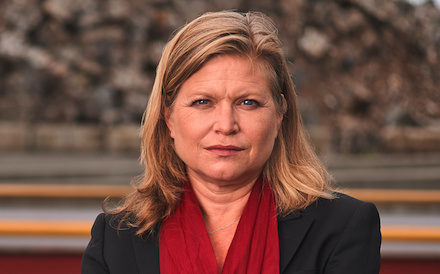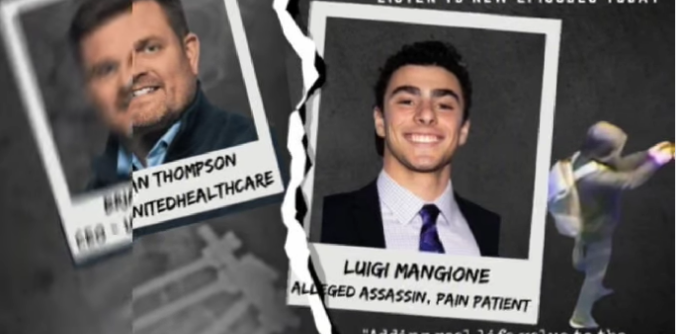Kathryn Garcia is running for the city’s top job. Photo: Courtesy Kathryn Garcia.
Kathryn Garcia is running for mayor of New York and her resume speaks for itself.
She is a life-long Brooklynite, former commissioner of the New York City Department of Sanitation, former COO of the New York City Department of Environmental Protection, and former Interim Chairperson and CEO of the New York City Housing Authority.
It is a crowded field, and Garcia is one of 10 candidates vying for the City’s top job. While Garcia is best known for her effective leadership of the nation’s largest public waste management agency, little is known about her policy stances beyond climate change. In a recent interview with Black Star News, Garcia talked about an issue that closely affects half-a-million New Yorkers; the future of the New York City Housing Authority (NYCHA), and why she supports the agency’s Blueprint for Change.
NYCHA’s Blueprint for Change is the latest and most daring transformation plan put forth by the beleaguered public housing agency. Previous failed attempts include NextGen NYCHA and NYCHA 2.0, both of which sought to sell underutilized properties and development rights from NYCHA’s portfolio as a means of generating the revenue required for needed repairs on remaining properties. The Blueprint for Change seeks to create approximately $40 billion in capital needed by transferring ownership of the properties from NYCHA’s portfolio and placing them into a public land trust.
Once in a public land trust, most of the apartments would then qualify for funding under the Housing Choice Voucher (HCV) program or Section 8, rather than the Public Housing program, also known as Section 9. Under HCV each apartment would receive an individual rental subsidy and be subjected to regular Housing Quality Standard (HQS) inspections, which the unit must pass for continued funding. As part of his plan to facilitate the repairs, Gregory Russ, current NYCHA Chairperson and CEO, is calling for the creation of a NYCHA construction authority similar to NYC School Construction Authority (SCA). NYCHA, itself, would serve as the property manager.
Presently, Garcia is the only mayoral candidate that fully supports NYCHA’s Blueprint for Change or, as it is sometimes called, the Russ plan. Other mayoral candidates have been more cautious about endorsing the plan, at least publicly, because of prior failed turnaround plans and fear of losing a significant voter block. Garcia, not one to shy away from taking the lead, especially during times of crisis, has gone all-in on the Russ plan. “NYCHA doesn’t need another plan,” says Garcia, “residents have seen plan after plan after plan, including three plans under the de Blasio administration. Waiting around amounts to demolition by neglect.”
Theoretically, the Blueprint for Change sounds brilliant, however, it has two substantial limitations: it is dependent on the political climate for sustainable funding, and NYCHA operating as an effective property manager. During the Trump administration, the president proposed drastic cuts to the US Department of Housing and Urban Development (HUD) budget; $6.2 billion in FY18 and $8.6 billion in FY20. If executed the proposed cuts would have adversely impacted all HUD-sponsored programs including block grants, HCV subsidies, and public housing.
Although the Biden administration plans to fully fund Section 8, the money is not guaranteed given that the Senate is evenly split. To secure the funds every Democratic senator would have to vote favorably with Vice-President Harris serving to break the tie. In States with large blocks of fiscally conservative voters, Senators may be reluctant to approve a budget that would nearly double the current HUD expenditures of $47 billion.
The Blueprint for Change also depends on NYCHA serving as an effective property manager which translates into the agency expeditiously tending to service requests, and adequately reporting building conditions and fund allocation. If prior experience can be an anticipation of future performance, we can expect NYCHA to buckle under the pressure of being held to a much higher standard.
When asked about supporting a plan heavily dependent on the federal government for this level of funding, Garcia was unfazed. “The federal government has never cut Section 8 funding because every state got it, every state has Section 8 housing,” she said. Section 8 or HCV subsidies are paid to private property owners through the country for leasing apartments and homes to impoverished and disabled households. However, budget allocations for Section 9 housing, public housing developments, are routinely slashed. Public housing developments are primarily found in cities and urban areas. Garcia supports the Blueprint for Change because she believes people deserve homes that have heat in the winter and free from lead and mold.
In addition to subsidizing the tenant’s rent, HCV provisions provide funds to property owners to transform dilapidated buildings into fully renovated living spaces. PHAs or the municipality is responsible for public housing development renovation costs under Section 9. For Garcia, “the plan is a financing solution that does not take away the rights of any resident”.
Under the Blueprint for Change, residents will have the same lease and rights, the only change would be how their housing is being subsidized. That is an important detail as many NYCHA residents fear that the Russ plan might usher potential rent increases or serve as a pathway towards privatization.
The herculean task of the Blueprint for Change would be transforming NYCHA into an effective property manager. Presently, the agency has over 400,000 open repair request tickets, ranging from leaky sinks to broken elevators and security lights. Residents submit repair requests through the City’s 311 switchboard, which forwards the request to NYCHA. In theory, NYCHA informs its property managers. The property managers dispatch repair crews based on schedules and available resources. In practice, repairs are often delayed due to limited resources, misappropriation of funds, falsified reports, and apathy on the part of NYCA staff that sometimes stem from the top-down.
The Blueprint for Change is not NYCHA’s first foray into Section 8 funding. The Permanent Affordable Commitment Together (PACT) component of NYCHA 2.0 sought to convert 62,000 of the agency’s more than 175,000 apartments from Section 9 to Section 8 funding. To supplement the renovation cost of the remaining units, NYCHA would lease under-utilized spaces on its properties to private developers. The Blueprint for Change eliminates the need to lease out a portion of the NYCHA properties.
Mayoral candidate Garcia is hopeful that NYCHA staff can meet the challenges presented with proper training and investment. Garcia would put the resources and the accountability at the property manager level. She would ensure that property managers have enough maintenance staff and materials to get the job done.
Garcia would implement classroom and on-the-job training for NYCHA property managers and have them work with mentors. This may be an overly optimistic view, and training and resources may have little effect on the managers’ performance.
Although the Blueprint for Change is an amalgamation of past failed NYCHA solutions, Garcia has a proven record of leadership. During the de Blasio administration, it was Garcia whom he called upon to manage crises, whether it was snow-removal or serving as Interim Chairperson and CEO of NYCHA. An advantage Garcia has over most of her competitors is that she is not a career politician and believes in getting things done.
If elected Mayor, Garcia says she will bring her passion for the City and her proven leadership style to the position. Garcia’s excitement and love for this city come out when she talks about her childhood and her observations of NYC today.
As a child she has fond memories of knowing people on her block, playing kick-the-can and skelly, watching still-ball, or just hanging out on the stoop. Today she lives two blocks from her childhood home in Park Slope. She recalls the crime-ridden days of the City and residents having to be alert of their surroundings. Now, most people are immersed in their own universe, dictated by mobile devices.
Growing up in a household of five children, diversity was more than a buzzword in Garcia’s family, it is a way of life. Four of her parent’s children including Garcia were adopted. She has two African American siblings. Garcia is close to her family and admits to doing the mom thing, telling embarrassing stories about her children.
As a leader, Garcia has an open-door policy and wants her team to feel comfortable telling her the truth. She says she may not agree with the dissenting opinions, but she always prefers hearing them in coming to a more informed decision. She prefers the truth over “group speak,” she says.
She says she likes surrounding herself with smart people that are invested in the mission and vision. Garcia believes in having people around her that she can entrust to do the job well. During her 14 years as the commissioner of the Department of Sanitation, Garcia regularly engaged her workforce, going to sanitation garages or on the streets to hear first-hand from the workers themselves.
She held garage superintendents accountable for service delivery in their districts and gave them the resources to get the job done. It is no surprise that the Sanitation Workers union has endorsed her for mayor.
Will she make it to Gracie Mansion? Voters get to decide.







